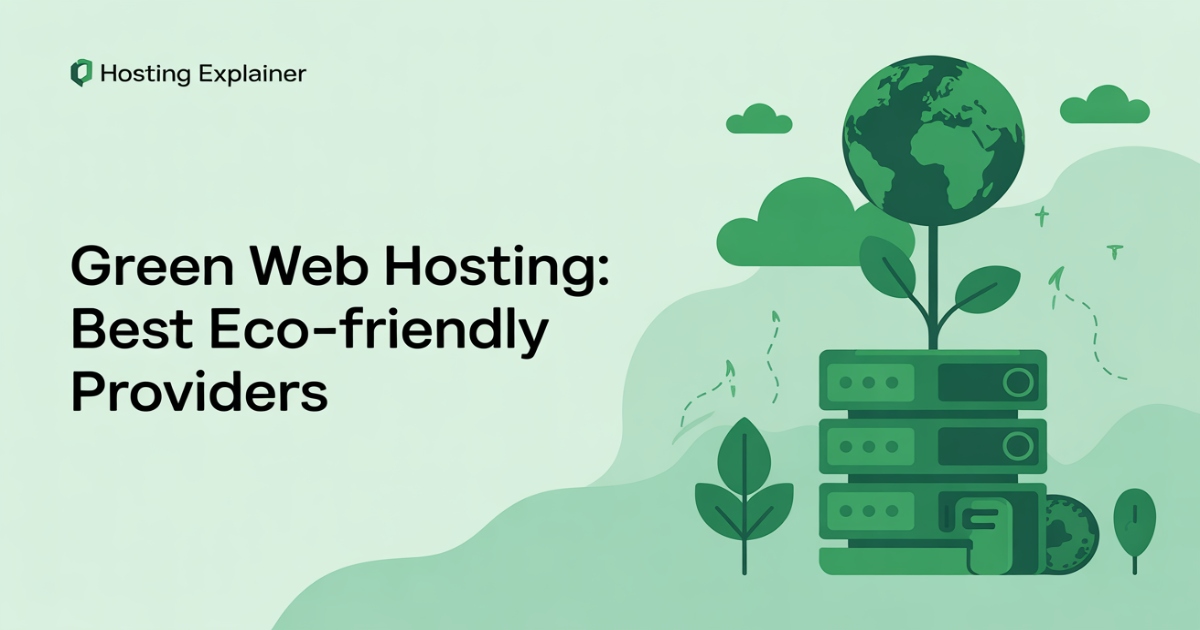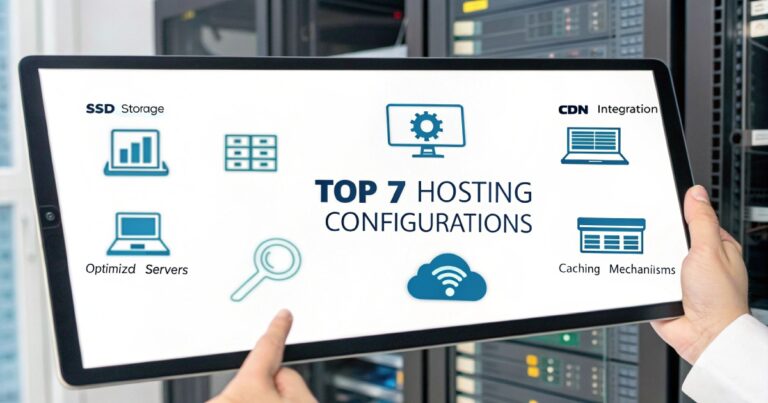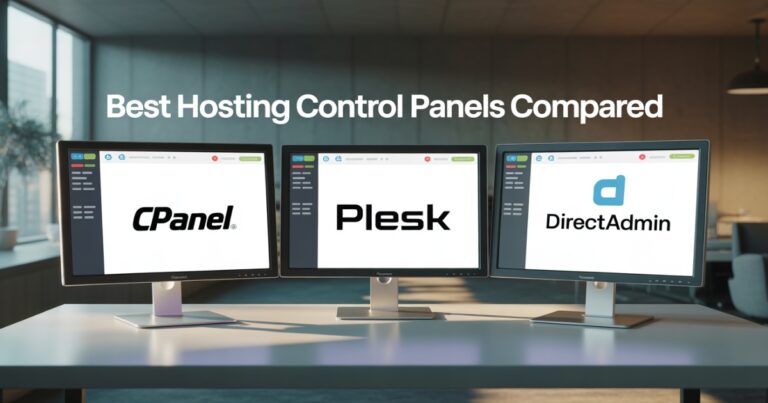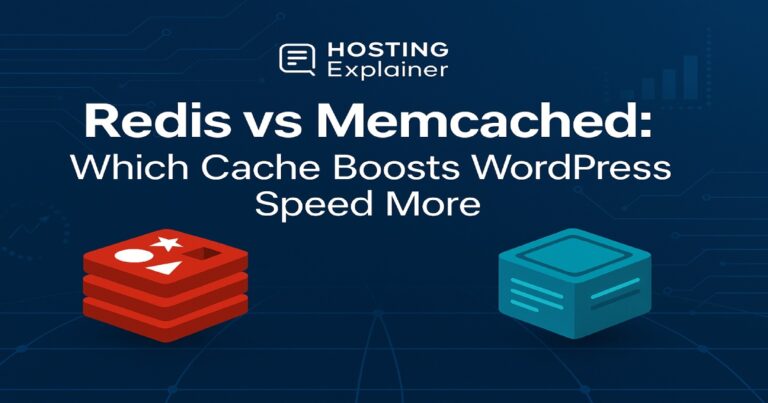Green Web Hosting: Best Eco-Friendly Providers 2025
When I first started looking into hosting, I assumed the choice was only about speed, storage, or cost. Later, I discovered that websites leave a measurable carbon footprint. That changed how I view hosting entirely.
Green web hosting isn’t just about running a website. It’s about reducing the environmental impact of energy-intensive data centers while still getting fast and reliable performance.
In 2025, choosing an eco-friendly host is not only responsible but also aligns with consumer trends that favor sustainability.
In this article, I’ll cover everything: what green hosting is, why it matters, how it works, and which providers are leading the way.
I’ll also share actionable tips for picking the right host and answer the most common questions. By the end, you’ll understand why eco-friendly hosting is an important choice for any website owner.
What Is Green Web Hosting?
Green web hosting refers to servers powered by renewable energy or offset through verified carbon-neutral programs. Traditional hosting consumes large amounts of electricity, often from coal or natural gas. Eco-friendly hosting changes that by using solar, wind, or hydro energy, or by purchasing carbon credits to balance emissions.
In practical terms, your website functions the same way, but the energy behind it comes from cleaner, renewable sources. This is why you’ll often see terms like “sustainable web hosting,” “carbon neutral web hosting,” and “environmentally friendly hosting” when researching green providers.
For anyone looking to reduce their online footprint, switching to a green host is a meaningful step. Personally, I’ve seen it become a deciding factor when clients choose between two hosting options; people genuinely care about the environment now.

Why Eco-Friendly Hosting Matters in 2025
Data centers worldwide consume about 200 terawatt-hours per year, nearly 1–1.5% of global electricity. That’s equivalent to the energy consumption of some small countries.
For website owners, switching to green hosting is a direct way to reduce your site’s carbon footprint without sacrificing performance. Beyond environmental reasons, there’s a branding advantage. Many U.S. consumers prefer companies with sustainable practices.
As a website owner, showing that you use eco-conscious hosting signals responsibility and builds trust. When I implemented green hosting for a client’s e-commerce site, they noticed positive feedback from customers.
Green hosting also aligns with corporate social responsibility (CSR) goals for businesses. Even bloggers and small site owners can contribute meaningfully. A small action like choosing sustainable web hosting can ripple into larger environmental benefits when many websites adopt similar practices.
How Does Green Web Hosting Work?
You may wonder! How can a website be “eco-friendly” behind the scenes? Here’s the breakdown:
- Renewable energy hosting: Some providers run servers on wind, solar, or hydroelectric power.
- Energy-efficient servers: Modern hardware is optimized to use less electricity while delivering strong performance.
- Carbon offset programs: If fully renewable energy isn’t feasible, hosts invest in verified carbon credits to neutralize emissions.
- Eco-friendly data centers: Buildings designed for reduced cooling costs, efficient airflow, and smart energy use.
These strategies make carbon-neutral web hosting possible. What surprised me is how seamlessly it integrates. You get the same uptime, security, and speed as traditional hosting, but your site is powered responsibly.
Green Hosting vs. Traditional Hosting
When choosing a hosting provider, understanding the differences between green hosting and traditional hosting is crucial. The table below breaks down key factors like energy source, cost, performance, and environmental impact.
| Feature | Green Hosting | Traditional Hosting |
| Energy Source | Renewable or carbon offset | Fossil fuels |
| Cost | Often similar, sometimes slightly higher | Wide range |
| Performance | Reliable, modern servers | Reliable, mixed old/new servers |
| Environmental Impact | Low carbon footprint | High carbon footprint |
| Support for CSR | High, visible | Low, minimal reporting |
A common misconception is that eco-friendly hosting is less reliable or slower. In my experience, this is false. Many green providers invest in modern infrastructure, sometimes outperforming older traditional hosting setups.
As you can see, green hosting offers similar performance and cost while significantly reducing your website’s carbon footprint. It’s a practical choice for anyone who wants reliable hosting with an eco-conscious edge.
Best Green Hosting Providers in 2025 (Reviewed)
Let’s review some top options for eco-friendly hosting. Each provider is verified for sustainability and reliability.
1. GreenGeeks
- Energy: 300% renewable energy credits.
- Performance: Fast SSD storage, free SSL, 99.9% uptime.
- Best for: Small to medium websites.
- Pros: Excellent customer support, beginner-friendly, strong environmental credentials.
- Cons: Slightly higher renewal costs.

2. A2 Hosting (Green Plan)
- Energy: Carbon-neutral hosting options.
- Performance: Turbo servers for faster load times.
- Best for: Developers and advanced users.
- Pros: Strong performance, developer-friendly tools, environmentally responsible.
- Cons: Higher pricing for premium plans.
3. HostPapa
- Energy: Green energy certificates.
- Performance: Solid uptime, user-friendly dashboard.
- Best for: Small businesses and beginners.
- Pros: Affordable plans, transparent green policies.
- Cons: Limited advanced developer tools.
4. DreamHost (Carbon Neutral)
- Energy: Runs on renewable energy, offsets remaining emissions.
- Performance: Reliable, strong uptime, scalable for larger sites.
- Best for: Bloggers, medium businesses, and content creators.
- Pros: Transparent sustainability reports, strong support.
- Cons: Limited shared hosting plans for ultra-small sites.
Each of these eco-friendly hosting companies balances cost, speed, and sustainability. Personally, I recommend evaluating site requirements first; small blogs can thrive with HostPapa or GreenGeeks, while larger sites may benefit from A2 Hosting or DreamHost.
How to Choose the Right Eco-Friendly Hosting for Your Needs
After reviewing providers, here’s how I select the best green hosting:
- Uptime and speed: Fast loading times are critical for SEO and user experience.
- Green credentials: Check for verified renewable energy or carbon offsets.
- Pricing: Most green hosting costs are close to traditional hosting, so budget carefully.
- Scalability: Your site should grow without switching providers.
- Customer support: Efficient support matters for resolving technical issues.
For new site owners, I recommend starting with a small plan from a sustainable web hosting provider. You can upgrade as traffic increases without changing hosts.
Real-Life Impact of Switching to Green Hosting
Switching to a green host may seem small, but the impact is meaningful. When I moved my personal blog to a green host, the experience was seamless.
Performance stayed consistent, uptime didn’t drop, and I had the satisfaction of knowing my website contributed less to global carbon emissions. Readers appreciated seeing an eco-friendly badge on the site, which enhanced credibility.
Even for small sites, the collective impact of thousands of websites choosing carbon-neutral hosting is huge. For developers, bloggers, or businesses, the decision is simple: eco-friendly hosting is both responsible and practical.
FAQs About Green Web Hosting
1. What is green web hosting?
Its hosting is powered by renewable energy or offset through verified carbon programs.
2. Is eco-friendly hosting more expensive?
Typically no. Most providers price green plans competitively with traditional hosts.
3. Does green hosting affect website speed?
No. Modern servers ensure performance is equal to or better than standard hosting.
4. How do I know if a hosting company is truly green?
Look for renewable energy certificates, sustainability reports, or third-party verification.
5. Is green hosting reliable for large websites?
Yes. Many green hosts offer enterprise-level plans with guaranteed uptime.
The Future of Sustainable Web Hosting
We’ve covered what green hosting is, why it matters, and which providers are top choices in 2025. The future is clearly moving toward more sustainable, eco-conscious data centers.
Choosing sustainable web hosting is one of the easiest ways to reduce your digital carbon footprint. It’s affordable, reliable, and has positive branding benefits. I encourage all website owners to consider switching; even small steps matter. Together, eco-conscious hosting can make a tangible difference.






